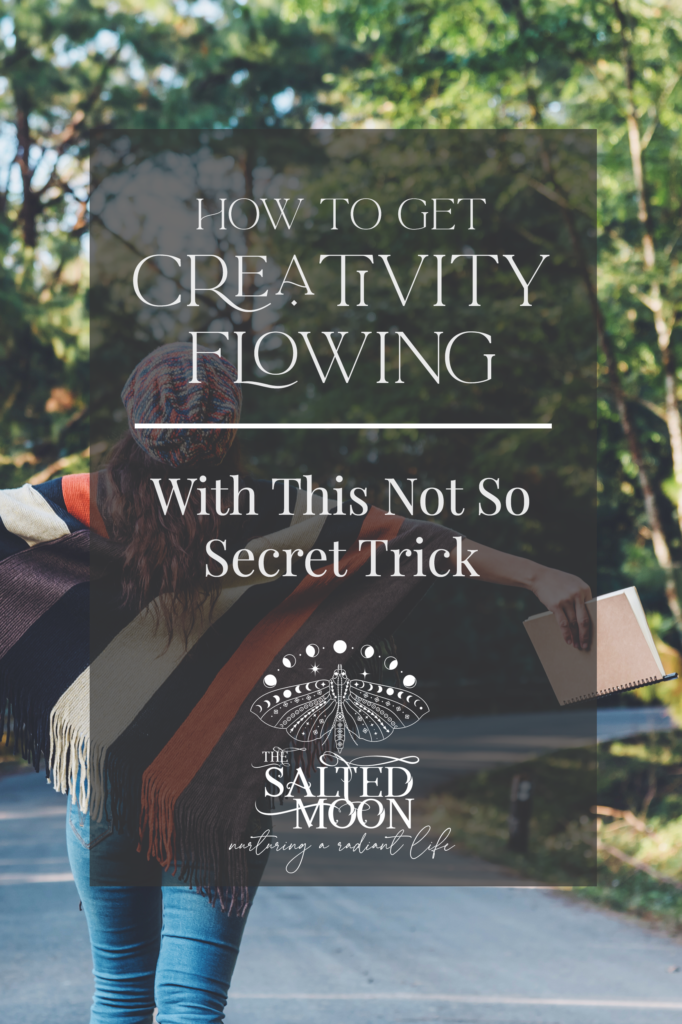Movement to get creativity flowing may not be the cliché you think of when you hear the phrase “creative genius.” More often, it’s the drinking, smoking, a bit mad maybe, image associated with The Artist.
Thankfully, that’s becoming more and more unpoetic. The great thinkers who’ve had a more healthy, holistic approach to revving up their creative juices are giving rise to the question: Does science back up the notion that a good jaunt around the neighborhood gets creativity flowing?
The answer is yes! And a little bit of not quite yet. But there’s clearly a correlation. Even the researchers are enthusiastic. So, let’s take a look.
Great Minds Move
To get us started, and prove we’re in the good company, here’s a fun list of artists, scientists, and philosophers who consistently used movement to power up their cardiovascular and creativity:
- Albert Einstein
- Aristotle
- Charles Darwin
- Charles Dickens
- Friedrich Nietzsche
- Henry David Thoreau
- Immanuel Kant
- John Muir
- Ludwig Van Beethoven
- Madonna
- Soren Kierkegaard
- Pyotr Tchaikovsky
- Steve Jobs
- Toni Morrison
- Virginia Woolf
- Williams Wordsworth
But these wandering masters had more than health on their minds, they had problem solving, creating, and unleashing their imagination as goals for their wander about.
They took to the paths and trails to free their thinking and bring their genius into the world. In doing so, they offer us a precious lesson on how to get creativity flowing. Now research backs it up.
Research Says, “Go For a Walk”
In 2014, Marily Oppezzo and Daniel L. Schwartz from Stanford University published the often-referenced study on walking and creativity.[1] Their findings? “Walking opens up the free flow of ideas, and it is a simple and robust solution to the goals of increasing creativity and increasing physical activity.”
The study demonstrated a strong effect of walking on enhancing creativity of the walkers. The participants were able to tap into their deeper subconscious and come up with many novel ideas and solutions unique to each person.
Although no conclusions were reached as to how or why, the relationship is strong and will be further explored. And, of course, you can give it a try yourself if you haven’t yet. Or if you’re a walking creative, now you have more proof that you’re spending your time wisely.
Me thinks that the moment my legs begin to move, my thoughts begin to flow.
Henry David Thoreau
Is Creativity Flowing
Creativity is a messy, murky, awe-inspiring, fleeting, ethereal sort of experience. This makes it difficult to quantify. Scientists aren’t fond of fuzzy, self-reporting analysis, so creativity hasn’t been easy to research.
But, while creativity can be expressed in many ways, here are two that researchers can measure.
Convergent thinking is finding innovative solutions to a problem. It’s connecting ideas in a unique way. So, for instance, what do these three words have in common: tooth, potato, and heart? [2]
Divergent thinking is the revelation of original ideas. It’s like brainstorming, where there are many possible correct answers to a problem.
Although both brain processes are enhanced by movement, divergent thinking, when innovation and originality are ignited, enjoys a greater increase through movement.
If your goal is to set your imagination wild and unleash your creativity, a walk might be the answer. Here’s the nitty-gritty.
Why Does Walking Work?
Looking at the circumstantial evidence in the history of creatives and what’s been learned from the research so far, it’s easy to jump to conclusions about why walking works to get creativity flowing.
The hard and fast reason there’s a connection between greater imagination and moving hasn’t been discovered, but there are plenty of interesting theories. Let’s take a look at some of the whys being tossed around out there.
One is that getting out and taking a walk outside increases the feel-good hormones and a better, happier mood is the result.
So far so good. This is true. No denying that.
But is a happier person a more creative person?
What researchers at Austria’s University of Graz discovered was that a good mood didn’t equate with an increase in creativity. And some of the study participants were on a treadmill looking at a blank wall. Not exactly the mood-enhancing powerhouse of a walk along the ocean.
Which also strips us of the go-outside-and-enjoy-nature reason. Although, do it. You won’t regret it. And those who were outside did have even greater increases on their creativity results, just not as much of a difference as seems likely.
So, if it’s not because a person is happier, then what’s going on?
What Else is Going On When Creatives Walk?
Walking has a certain rhythm that we then pace our thinking to. Back and forth, our footfalls set the cadence of our thinking and our thinking can influence the pace we walk. Rhythm is powerful. The interplay is meditative. Our minds can wander.
While engaging in a relaxed and distracted activity, our quiet voice can be heard. The voice that connects thoughts from deep inside our heads and finds associations and new outlooks on ideas and challenges.
Because our brains get more blood, oxygen, and nutrients and we clean out debris and are in better moods. We reason better. We’re healthier.
Exercise also helps with sleep. Better sleep = better cognitive flexibility & creativity.
While all that may be true, it’s speculation. Let’s take a peek at the brain science to get a more authoritative outlook.
A Little Brain Science
If you’re daydreaming, letting your mind wander, reliving events from the past and future thinking, you’re in what is often called default mode. This is where your imagination gets to run amok and take joyrides on the purple unicorn of your subconscious.
In other words, when you suddenly come to and realize you’ve been zoning out you’ve been in DMN (default mode network).
If you’re concentrating on a task and directing your focus on a particular activity, you’re in executive control mode. This is when you stay in the present and are mindful of what you’re engaged in.
Do you see a struggle for creatives?
If we are in default mode because we are worrying or ruminating, and we stay here most of the time, our mental wellness will suffer. We will be stuck in this negative thinking space and increase our stress. This is why mindfulness and meditation are so important for our longevity and health.
But as creatives, we need to spend time in the default mode. This is where so much magic happens.
As with everything, by first paying attention and knowing what our mind is doing, we can then learn to understand and foster the skills we want to strengthen and use the different brain modes as we want. With purpose.
Creativity Flowing and Brain Science
But it gets even more fascinating.
In an article by Roger Beaty [3], creative individuals were shown to engage both default mode network and executive function network of their brains. Both! At the same time.
Speculation abounds about whether these highly creative people are simply unable to turn off their default mode [4] on some level while still focusing on a task. And it appears that while engaged in an artistic project, those with the most creativity fluctuated between the two brain networks as needed while creating.
Okay. And what does that have to do with walking? Glad you asked.
Walking, running, swimming, rowing, biking, or any activity that has an element of movement without having to focus too much attention to the skill, is the secret to activating innovative, imaginative thinking.
When our minds are given free rein to roam, our thoughts wander along with our feet, and all the ideas we are working on get to incubate. But the secret is to combine it with an activity that doesn’t require a lot of concentrated focus. Like showering or commuting. And walking, of course.
This is because it engages both forms of brain networks. A perfect way to prime the pump and get creativity flowing.
Consider This When Walking for Creativity
Following a few suggestions will help you get the most creative bang for your ambling bucks.
Regular exercisers get the most creative boost from movement. If you’re exhausted and spent from your activity, then you’re not going to be creative. Translation: Those that get regular moderate movement for at least thirty minutes, four times a week, will see the greatest advantage.
Remember it’s exercise that gets you moving, but doesn’t require concentrated focus and attention and lets your mind flow. Try walking, biking, swimming, dancing, or other mind wandering rhythmic movement. Something that gets you outside earns bonus points! (Just kidding. No one’s keeping score.)
This expansive mind state seems to peak during and for two hours after movement. So, if you have a particularly challenging creative work to do, take a walk and come home and work on your project right away.
Notice I mentioned increased creative thinking during exercise?
All truly great thoughts are conceived by walking.
Friedrich Nietzsche
Taking Notes
Aha moments during a shower. Unraveling plot knots during your swim. A new take on a struggling project while driving home from work.
Another reason for creatives to have a notebook with them at all times.
It’s often said that Nietzsche wrote The Wanderer and His Shadow all while walking, sometimes up to eight hours a day. And Beethoven always took his notebook with him while walking.
Yeah, this can be tricky. Depending on your activity the method will change but think ahead so you can record all the juiciness your imagination spills for you and any insight that startles you with its wonderfulness.
Paper and pen notebooks are standard, and there are waterproof ones for your shower or other water activities. And you can always use your phone to record audio files of your thinking.
Get Your Creativity Flowing!
Try as we might we can’t wrangle our creative thoughts, we have to pause sometimes to let them gurgle up from our subconscious. Dreaming, daydreaming, exercise and meditation should be a daily habit of great minds and creatives.
Our brains are so complex and multi-layered that we are only beginning to understand how they work. But, by taking advice from a myriad of great thinkers and by nosing around in the latest research, taking a walk for our creativity is undeniably effective.
Set your imagination free and go out for a wander!

Have you seen a difference in the unleashing of your imagination after a walk or similar exercise? What’s your favorite way to get moving and let your mind wander? Share in the comments!
[1] https://www.apa.org/pubs/journals/releases/xlm-a0036577.pdf
[2] Answer: sweet.
[3] https://www.ncbi.nlm.nih.gov/pmc/articles/PMC4410786/
[4] Chronic overstimulation of the default mode network can cause problems. Many conditions such as ADHD and depression have been linked to an oversaturated DMN. There is still science that needs to be done.



